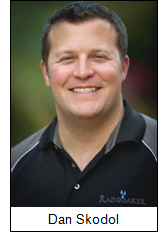   
Back
To News/PR Index
|

|
|
Beyond
RevPAR:
|
|
Understanding
Total Group Revenue for Hotels
|
|
By Dan Skodol,
|
|
Vice President of Revenue Analytics
at Rainmaker
|
|
Alpharetta,
GA – September 2018 / Newsmaker Alert / Once
upon a time, group business was essentially a filler for the guest rooms
that transient business didn’t occupy. In today’s world of all-time
occupancy highs,1
group business tells a different tale. When hotel owners examine their
full profit picture, many now understand that group business and the revenue
it generates is a major player in their overall revenue management (RM)
strategy. However, groups are a challenge to revenue manage, as they’re
made up of many moving parts. To be successful in the group arena, hotels
need to have the appropriate tools and strategies in place, as well as
a thorough understanding of group value. And that often begins with analyzing
the right metrics.
|
 RevPAR
Matters, But… RevPAR
Matters, But…
When
looking to increase your share of group business, revenue per available
room, or RevPAR, is a critical performance metric that often takes center
stage when it comes to developing your group business RM strategy. That’s
because the RevPAR index is the most popular metric for driving major capital
expenditures and RM decisions.
Case
in point, the 2015
Hotel Sales Incentive Practice Research survey by the HSMAI Foundation2
recorded the compensation structure of hotel RM teams and revealed that
52 percent of revenue managers and 36 percent of sales leaders use RevPAR
or room revenue as their primary performance metric. But there are drawbacks
to relying solely on guestroom bookings or RevPAR when it comes to evaluating
group business profitability. There are other revenue streams that generate
significant income and contribute real value to any piece of group business.
Total
Group Revenue Management Holds the Key
In
order to determine true profitability with regard to groups, RM
is shifting away from a focus on RevPAR3
and top-line rooms revenue toward a bottom-line orientation and strategic
profit management. This more precise view of group value is known as Total
Group Revenue Management and it moves beyond RevPAR to take multiple other
factors into account.
All
Revenue Streams
Total
Group Revenue Management expands beyond rooms to comprise all revenue sources
associated with group business. It works within the concept of time-perishable
inventory to optimize profits across all a hotel’s available function space
and products. To accurately evaluate group opportunities, in addition to
accounting for room rates and group blocks, hotels must incorporate other
key revenue streams, such as food-and-beverage packages, receptions, meeting
room rentals, and audio/visual equipment rentals. These ancillary sources
can yield tremendous profit, and are key considerations when deciding whether
to book group business. Other factors to consider include group history,
stay pattern, booking method, room type preferences, and the true cost
of displacement.
Displacement
Analysis
Traditional
displacement analysis examines the forecasted transient business that will
be lost if a hotel accepts a proposed group booking. Accurately determining
whether to accept a group’s business requires performing a complete displacement
optimization analysis that compares the total value of the business that
would be displaced if the group business is accepted to the total value
of the group. This model incorporates elements that are important to the
decision, including non-room revenue like catering, function space, and
additional spend while deducting any costs involved. Understanding displacement
allows hotels to more accurately calculate a break-even rate or total profit
hurdle for a proposed group.
At
first blush, it may seem that the right decision is to accept higher-rate-paying
transient business over a lower-rate-paying group. But there may be times
when it’s in your best interests to accept
the group business, even though it may appear on the surface to cost revenue.4
While your hotel may forego thousands of dollars in rooms revenue due to
displacement, based on a complete analysis, apparent losses transform into
profits when additional variables such as catering minimums and function
space rental are factored into the equation. Revenue metrics are crucial
to success, but when rooms-centric revenue is the only metric considered,
it can lead to counterproductive decisions concerning group business.
To
truly maximize the value of group business, hotels can use displacement
analysis in conjunction with optimized pricing that considers willingness-to-pay.
The first drawback of traditional displacement alone is that it only assesses
a breakeven point, which, while helping to ensure the group is not a losing
proposition, will fail to capture any additional upside stemming from what
a group may be willing to spend on room rate. The second drawback is that
traditional displacement only looks at potential groups displacing transient
and not the possibility of the group displacing other groups. Leveraging
a group forecast together with displacement analysis would allow hoteliers
to understand the relative profit or value of groups compared to other
groups, and allow the property to accept the most valuable business.
|
 |
|
Forecasting
Demand
One
of the most challenging components of Total Group Revenue Management is
forecasting group demand, particularly at the level of detailed granularity
necessary for driving solid RM decisions. The
focus on non-room revenue sources has changed the way many hotels develop
and use their demand forecasts.5
Technological advancements now allow revenue managers to drill deep to
create more nuanced pictures of future demand and more effectively yield
around transient business. The right technology also reveals smarter pricing
opportunities and lets you strategize the optimal business mix for your
hotel.
It’s
Really About Profits
Revenue
management is really about profits. And for far too long, revenue managers
have maintained a rooms-centric focus for group business, striving to optimize
RevPAR instead of looking at total group spend. RevPAR index growth or
decline is not always the best gauge of overall profitability. Total Group
Revenue Management presents a more precise picture of group profitability,
incorporating all hotel revenue sources and considering distribution costs
and operating expenses. By applying the principles of Total Group Revenue
Management, you will more fully comprehend your hotel’s DNA, empowering
you to take your profit maximization strategy to the next level and setting
your property up for success for years to come.
For
more on the topic of group business, specifically on including forecasting
for groups in your revenue management strategy, read my recent blog on
the topic, “Are
You Forecasting Transient Business Without Forecasting Group.”
Sources:
1.
Staff, Lodging Magazine. “CBRE Research Forecasts Occupancy to Increase
Through 2019.” Lodging Magazine, 28 Nov. 2017, www.lodgingmagazine.com/cbre-research-forecasts-occupancy-to-increase-through-2019/.
2.
“Hotel Sales Incentive Plan Design.” HSMAI Foundation, HSMAI Foundation,
www.hsmai.org/knowledge/summary.cfm?ItemNumber=18477.
3.
Noone, Breffni M., et al. “Total Hotel Revenue Management: A Strategic
Profit Perspective.” Cornell University, Cornell Hospitality Report, Mar.
2017, sha.cornell.edu/faculty-research/centers-institutes/chr/research-publications/documents/cathy-enz-total-hotel-revenue-management-strategic-profit-perspective-report.pdf.
4.
Morse, Stephen C, and Eric Beckman. “A Decision Model for Hotel Revenue
Management Displacement Analysis for Transient Room Demand vs. Group Room
Demand.” OMICS International, Journal of Hotel & Business Management,
1 Sept. 2016, www.omicsonline.org/open-access/a-decision-model-for-hotel-revenue-management-displacement-analysisfor-transient-room-demand-vs-group-room-demand-2169-0286-1000141.php?aid=79364.
5.
Ibid [3]
About
Dan Skodol
Dan
Skodol is Vice President of Revenue Analytics at Rainmaker. Dan came
to Rainmaker with over ten years of Revenue Management experience in gaming,
hotels, multifamily real estate, and airlines. He is responsible for researching
and designing enhancements and innovations within Rainmaker’s hospitality
product suite, as well as supporting thought leadership topics and studies
via analytics. Dan previously held Director of Revenue Management roles
for two casino organizations in Atlantic City, and Archstone Communities.
He holds a BA from Yale University and a Master of Management in Hospitality
degree from Cornell. Dan and his wife reside in Denver, CO with their two-year-old
son and enjoy skiing, hiking, and travel.
About
Rainmaker
Rainmaker
is the hotel revenue management and profit optimization cloud. The company
partners with hotels, resorts, and casinos to help them outperform their
revenue and profit objectives. Rainmaker’s cloud-based solutions for transient
and group pricing optimization, demand forecasting, business intelligence
and market analysis are designed to help hoteliers streamline operations
and revenue optimization processes, improve lead performance and drive
guest bookings. Recognized as one of the top privately held companies in
the United States, Rainmaker has been named to Inc. 5000’s ‘Fastest Growing
Privately Held Companies’ for the last seven years and to the Atlanta Business
Chronicle’s list of ‘100 Fastest Growing Companies in Atlanta.’ Rainmaker
serves hospitality customers throughout the world from its corporate headquarters
in Alpharetta, Ga. and from offices in Las Vegas, Singapore, and Dubai.
To learn more about Rainmaker and its suite of hotel revenue management
and profit optimization solutions, visit www.LetItRain.com.
Facebook
| Twitter | LinkedIn
Company
Contact:
Dana
Glaze
Marketing
Manager
The
Rainmaker Group
Phone:
470-440-2041 |



 RevPAR
Matters, But…
RevPAR
Matters, But…

